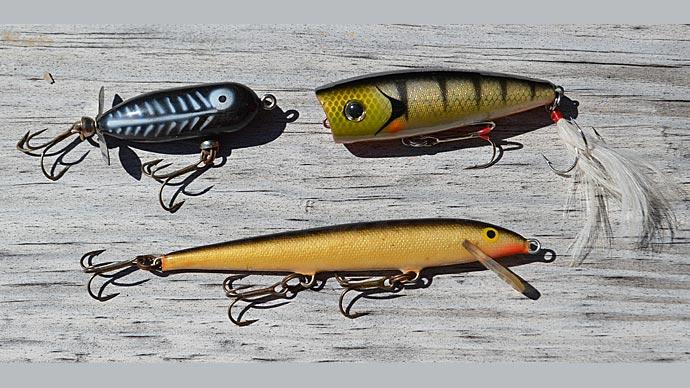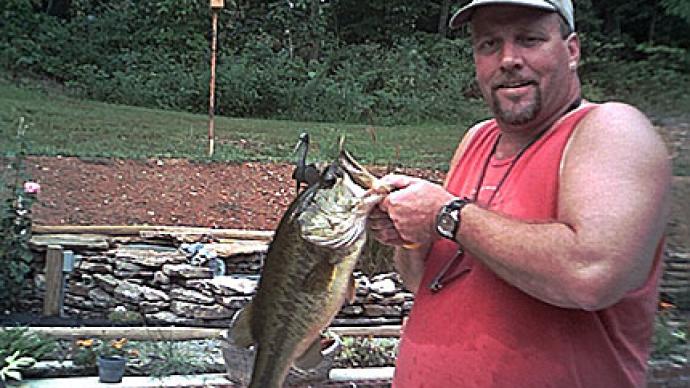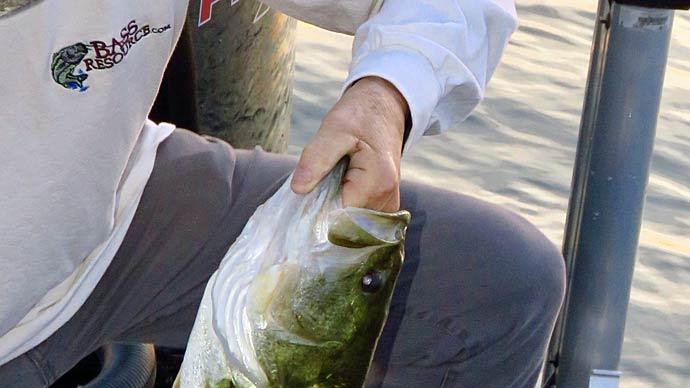Fishing topwater baits in the summer can be extremely rewarding. The bass' metabolism is going to be very high and they will chase baits in summertime-warm water. Also, this is the time of year the shad come to the surface, then you should look for active baitfish on the surface of the water.
Your choices of topwater lures in the summertime are many. From a walk-the-dog type bait such as a big Zara Spook or a Sammy, to a chugger bait like the Rio Rico or a Rico Grande, they can all be effective. You have to let the fish tell you what they want. There will be times they want the sounds of a chugger, or a more silent lure like the Ichiban Minnow or the incredible splashing sound made by a Super Spook. The right bait for the right day, you will definitely have to experiment with, and even possibly you will need to keep all your topwater baits on the deck.
The next thing you must determine is the cadence of the retrieve. Usually in the summer, you'll find the fish prefer a faster moving target, but adding a stop or two and allowing the bait to sit for a while will, many times, be just the ticket to cause a big bass to smash into your offering.
When fishing topwater baits I have found that the line you use can make an incredible difference in how the bait works and how well the bass will strike the bait. For virtually all of my topwater fishing I use Berkley's Fireline. I like this line because it floats extremely well. Regular monofilament has a tendency to sink and bring down the nose of your bait. This causes the bait to dive rather than splash or walk the way you and the fish want it to. In reality, monofilament can ruin the effectiveness of a topwater bait. With the Fireline, the lure can work the way it was designed to work. The other benefit of the Fireline is that I can start the action of my bait after a pause much quicker because I don't have to get the nose of the bait back up.
If you want to experiment with your topwater lures, there are plenty of things that can be done. For instance, you can add feathers to your lures that will give them much more action, especially when you stop the bait. The feathers will continue to undulate, driving bass crazy.
One big tip for fishing a Zara Spook is to make sure to add a split ring to each of the hooks on the lure. When caught, a bass can use the lure to help pry off the hooks. By adding split rings to the hooks you help to eliminate any winching effect the lure may have.
The key element to using topwater baits in the summer is locating the baitfish. Most of them are going to be back in the bays or on secondary points. It's pretty rare to find the baitfish on outside points. On lakes such as Mead, you can see the shad boiling near the surface, which will generally indicate stripers, but, where the bait is, the black bass will follow also. Many times you can catch bass among the stripers.
Granted, you will probably catch a striper or two before you get a bass, but keep at it and change lures often. Sometimes you can throw a Zara Spook out and the bass will hit it and the stripers won't. It all depends on current conditions, and it requires some experimentation. If the stripers are hitting the Spook, then I'll try a chugger bait. It's interesting to see, whatever the stripers aren't interested in, the bass will slam.
Most of the time, a chugger will draw less attention from the stripers and it gives the bass time to get through the stripers and eat the bait.
While the summertime topwater bite will usually be best early in the morning or later in the evening, don't count out the time between 11:00 a.m. and 2:00 p.m. You won't have a big feeding frenzy and catch a ton of fish, but for some reason there are few good fish that move up and hold onto something like a big piece of brush or a weed patch and they are just sitting in there, and they are hungry. You may catch two or three in a day this way, but they are generally quality fish. You may catch good numbers of fish in the morning, but the few you catch mid-day will almost always be bigger.
It's always a good idea to keep a topwater lure tied on and on the deck to occasionally test the midday bite. If you are fishing tournaments then you can't really count on the evening bite because the tournament is over. If you are, on the other hand, fishing for fun, then you will discover more bites in the evening, much like morning, but with better quality, like the afternoon bite.
I have my own theory as to why the bigger fish are caught later in the day. I think in the morning, the more aggressive small fish kind of take over the buffet line and as the day wears on and they have filled themselves; then they move out and allow the bigger fish to hit whatever stragglers are left.
When it comes to colors, you can't go wrong with shad colors on the desert lakes. Clears and bone colors work very well. I like to use a clear bait but I will add flakes to the lure. I'll spray the lure with a clear lacquer and then sprinkle flakes in silver with a hint of blue, or red, or even green. By doing this I am presenting a bait no one else is using. I will even sometimes paint gills on them with a little fingernail polish.
When you're in a pocket that has a lot of grass in it and you notice a fairly good bluegill population, then throwing a topwater with a bluegill pattern can encourage some vicious strikes, especially in the mornings.
Fishing topwater lures in the heat of the summer is exciting. Fishing shade pockets or days that stay overcast can lengthen the time a topwater lure is effective, but don't quit using them when the sun gets up, pull a topwater out occasionally all day long and test the waters. You may be surprised at the quality of fish it can catch.
Reprinted with permission from Bass West Magazine




